Get to know our favorite cool, calm, and collected herb: mint! We’re covering everything from uses and benefits to storage and recipe ideas.
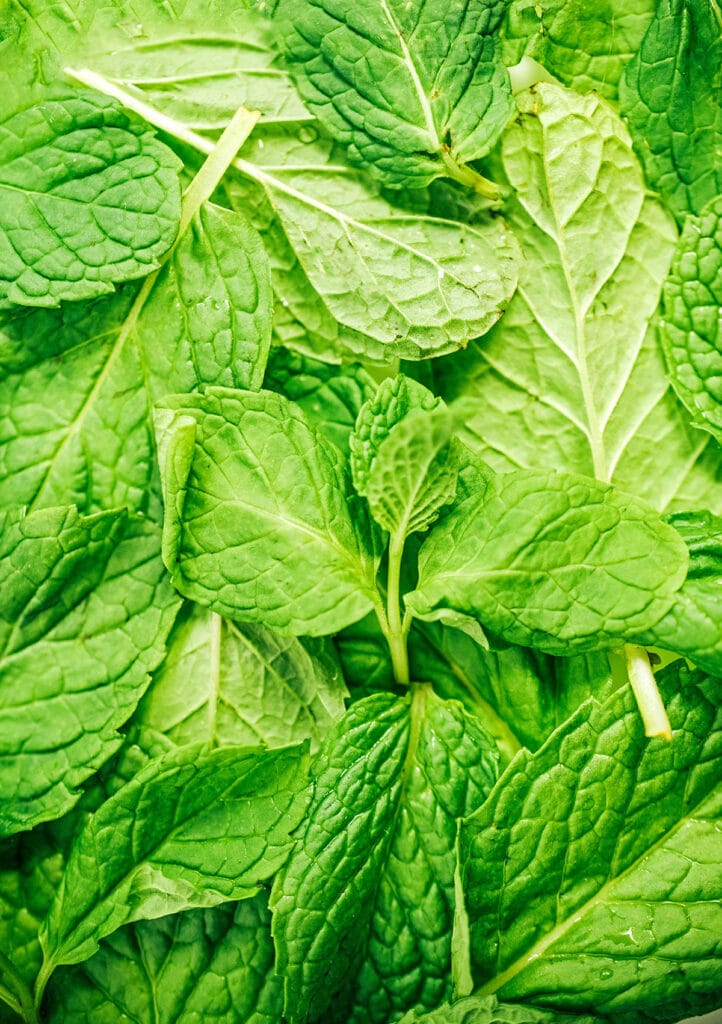
Known for its ability to give us great, fresh-feeling breath, mint is one of the most commonly used herbs out there. But how well do you know it, really? Mint is loaded with benefits that extend far beyond the fresh factor. It’s filled with nutrients, has many health benefits, and does wonders in the kitchen!
Mint, like other herbs, comes in fresh and dried forms. Its fresh form contains a more potent flavor, but the dried form can just as easily take any recipe up a notch.
In the United States, you’ll find mint grown and harvested in the midwest and west coast in states including California, Idaho, and Wisconsin, among others. The plant is also grown in Australia, Africa, Europe, and Asia! It nearly has the entire globe covered. Most popular, though, are its roots in India, China, and the U.S. The herb is a spring plant, with peak season lasting from spring into early summer.
Home garden tip: It takes around 3 months to fully grow, and experts recommend harvesting it before it starts to flower!
How to use Mint
When it comes to using mint in cooking, you have a ton of options! It can be used in everything under the sun, from mint teas and other beverages (including adult options — Hugo Cocktails, anyone?) to salads, kombucha, popsicles, and more.
A little bit of the herb goes a long way, allowing it to make a punch in any recipe it’s added to.
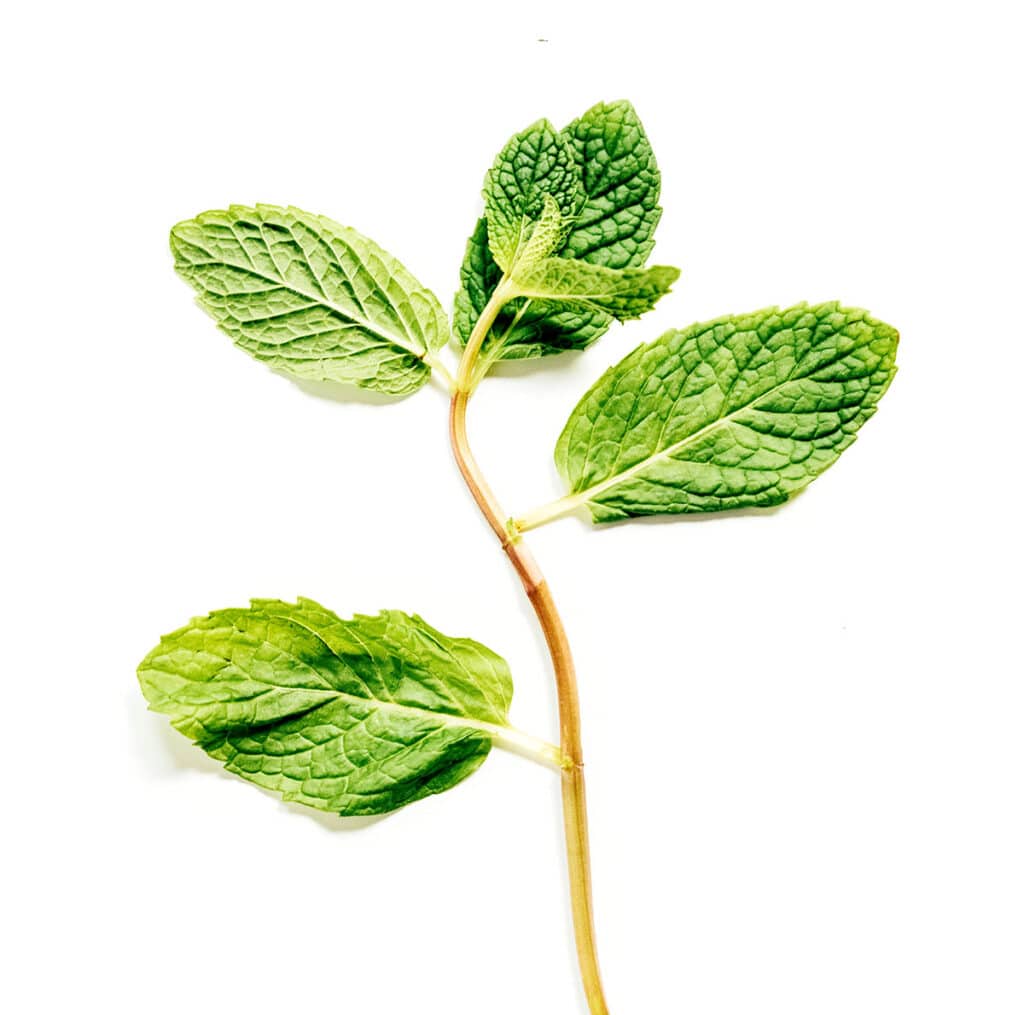
Mint Health Benefits
Apart from cooking, many herbs are known for their health benefits. As for mint, this herb is loaded up with nutrients and plays a role in the body in various ways!
Nutrients in mint include Vitamin A, iron, manganese, folate, a touch of fiber, and even antioxidants. The herb has been known to support brain function, various aches and pains, digestive issues, and even cold symptoms!
Most recipes utilize mint in very small amounts (a little bit goes a long way). For mint benefits to take effect, it’s great to use the herb in teas, sauces, and other liquid-type recipes, as the concentration in these is much higher.
Why people love the essential oil
When it comes to mint essential oils, peppermint is the type that is most commonly used. It is known for its many benefits and can be used for diffusing or in topical treatments.
One of the greatest benefits of peppermint oil is its ability to ease nausea. When feeling sick, a slight drop on your upper lip right below your nose works wonders! The scent calms the stomach. It’s also known to benefit digestion, headaches, cold symptoms, and more. A powerful little thing, isn’t it?
Different types of mint
Mint extends far beyond its most popular form that you’ll find lining the shelves of the herb section. There are actually around 2 dozen varieties! However, two types take the cake for the most commonly used: spearmint and peppermint.
Spearmint is frequently referred to as English mint, though English mint is technically a member of the spearmint variety. This variation of mint comes with a sort of sweet and mild taste, and it provides the refreshing coolness that we all associate with the broad form of the herb. You’ll find it to be crunchy with bright green ridge-edged leaves.
Peppermint, another variety, has a much more intense flavor than spearmint. You will find it to be more potent in its mintiness, so to speak, with the most intense cooling sensation (i.e. the most menthol) and a sort of spicy (as in peppery) flavor.
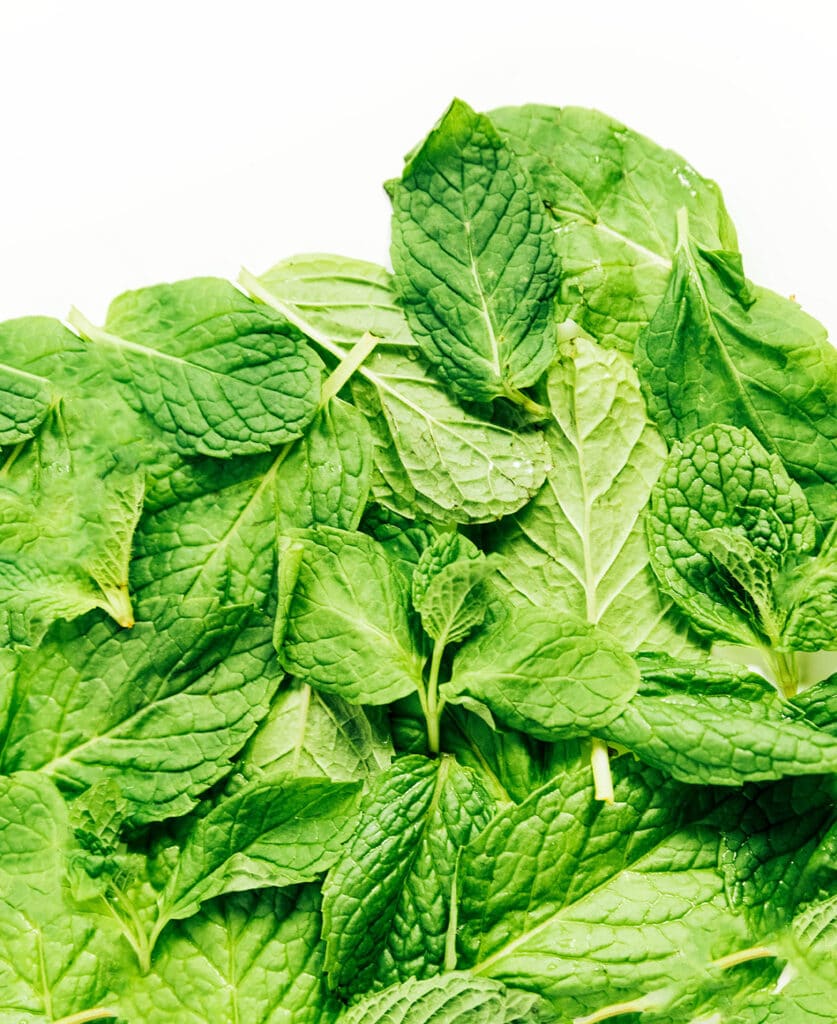
how to store Mint
To extend mint’s shelf life, store the bunch stems-down it in a mason jar filled with water. Then, place an open plastic baggie on top and refrigerate. This helps keep the mint fresh for over a week (so much longer than if you were to leave it in its original packaging). If you notice wilting or black spots, the bunch shouldn’t be eaten.
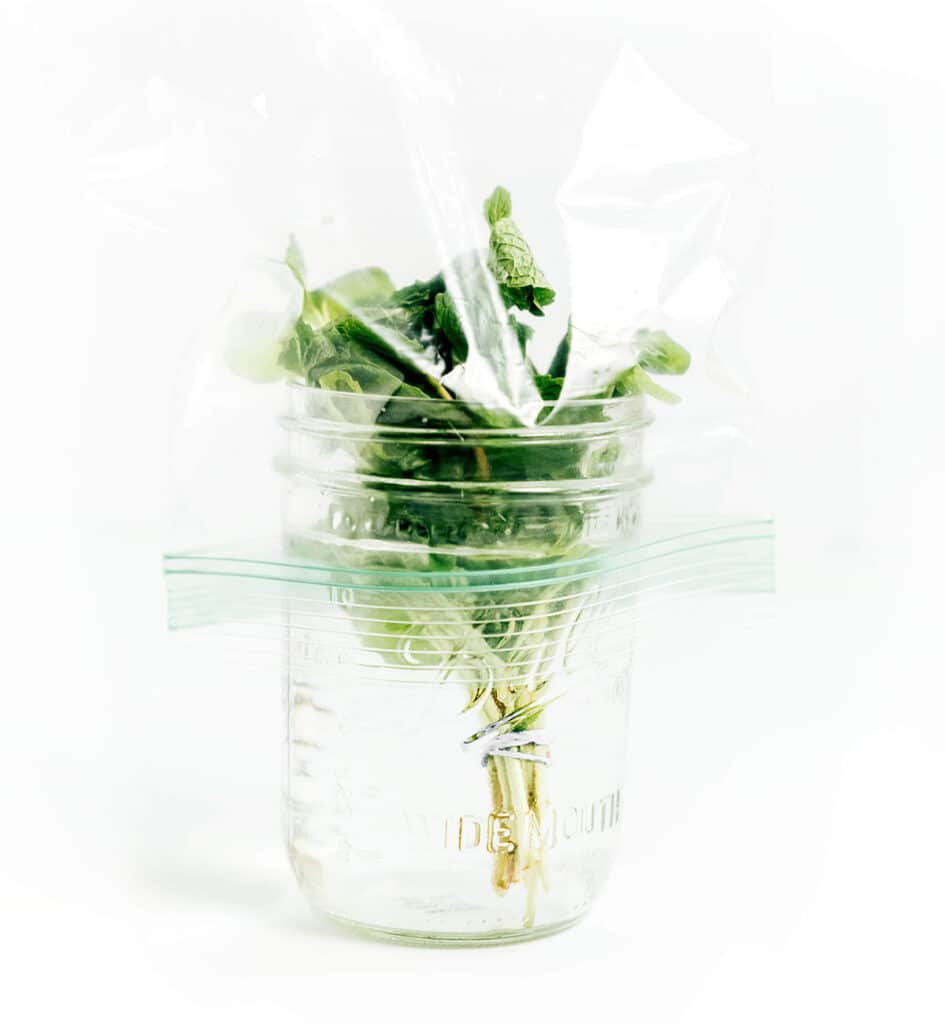
How to Clean Mint
Mint is best cleaned by placing it in a bowl filled with cold water. Swish the herbs around a bit to remove some of the dirt. Then, gently run them under cold water using a light stream.
Lay the herbs out on a paper towel. You can let them air dry or lightly tap them with another towel to remove some of the excess water.
Recipes to try
Now that you’re basically a mint expert, it’s time to use it in some recipes!
- Enjoy an equally sweet and refreshing dessert with these Mint Chocolate Popsicles.
- Morroccan Mint Tea is a great way to give your body mint’s many benefits!
- Refresh and cool down with this delicious Pomegranate Mint Water.
- For something a bit heartier, try Roasted Eggplant with Mint Sauce and Feta!
- Or let mint shine in all of its refreshing glory with this Mint Pea Soup!
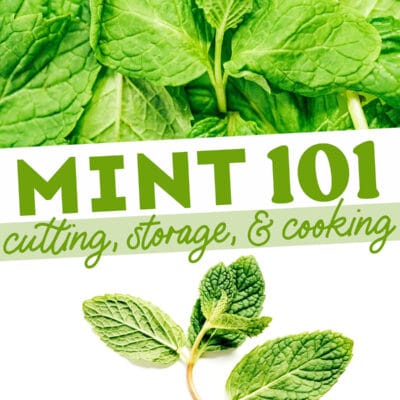
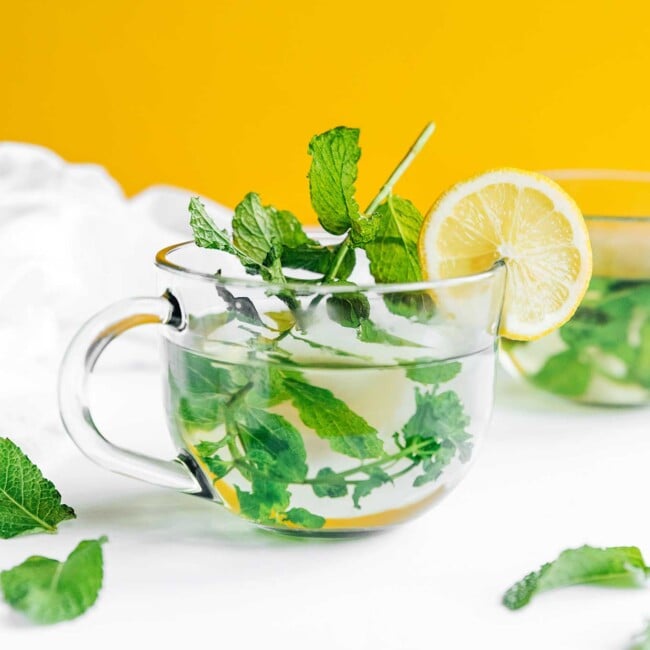
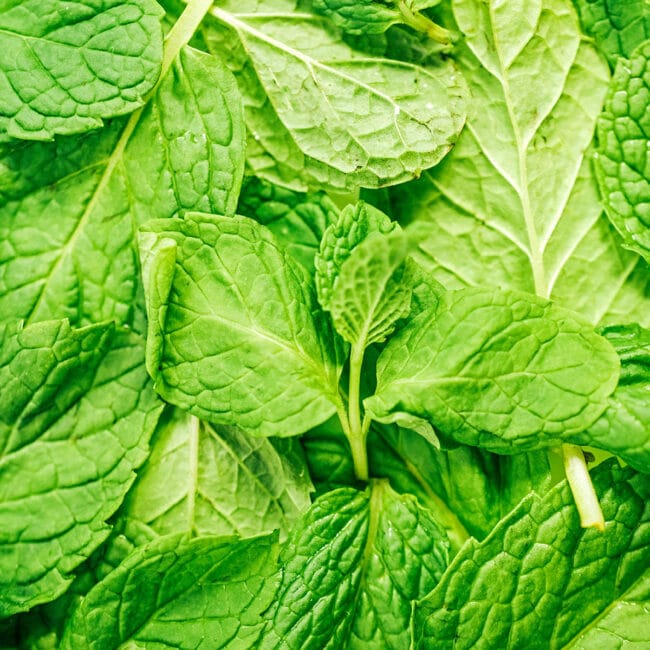
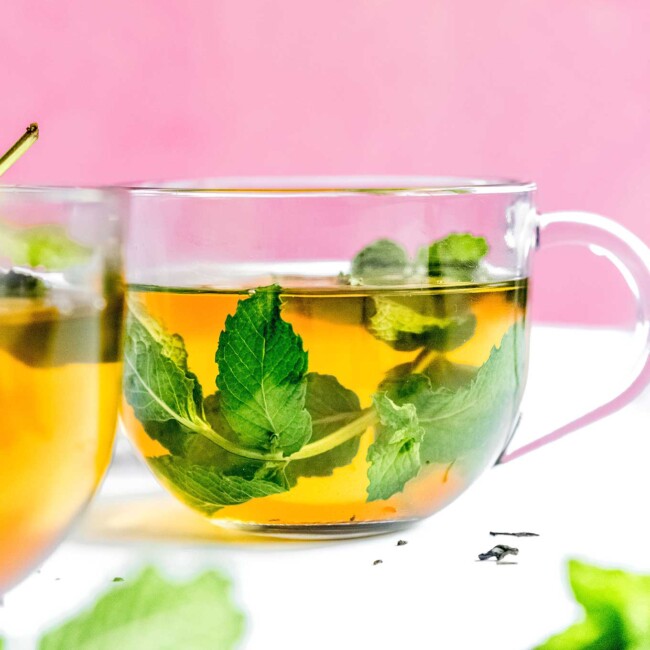

Noel Jones says
How do you prep the mint for consumption?
Besides letting them sit in water to get the mint flavor, how do you prep them for eating? Can you eat the leaves or stems? Do you need to dehydrate them before they can be eaten?
Do you need to boil them before you can eat them?
I have lots of mint and would love to make drinks, food or just eat by themselves, but not sure what steps to take to make sure it’s consumable.
Sarah Bond says
You can eat the leaves and stems, fresh or dehydrated! You just need to rinse them off them they’re safe for consumption 😀